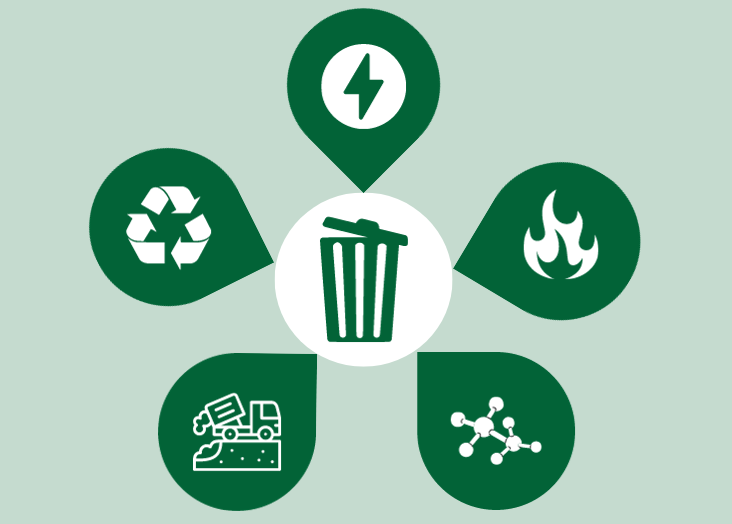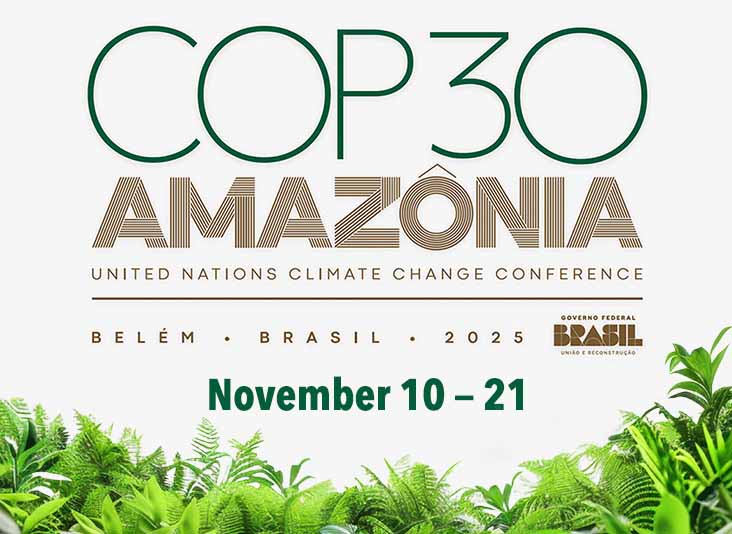5 Most Popular Choices for Waste Disposal: Which Is Most Sustainable?
Sustainable waste management is becoming increasingly important in the modern world. A rapidly growing global population is subsequently increasing raw material consumption—and this cycle is creating more industrial waste than ever before. Without a way to sustainably and effectively manage this waste, serious environmental consequences are likely.
Fortunately, there are a number of waste management methods and steps to improve sustainability of waste obstacles—with their own benefits and drawbacks. As an operations or facility manager, it is crucial to carefully consider each option. Armed with knowledge, you can then determine the one that will offer you the opportunity to reach or even exceed your sustainability goals. Your choice should be one that shows environmental sensitivity while simultaneously offering you the best long-term results for your operations.
Population Explosion Impacts SustainabilityIn recent years, the earth’s population has risen relatively rapidly. In fact, in November 2022, the total world population surpassed 8 billion people. This human milestone may seem exciting, but it may bring about more environmental issues—as more resources are necessary to support more people. The use of more and more products generates more and more waste—and increased environmental pollution. Pollution of all types, including plastic, air, water, and more, makes people sick and decreases overall environmental health.
The fact is, increasing raw material use is unsustainable. The more “stuff” is needed, the more is produced—and the more is produced, the more needs to be disposed of in a way that is sustainable for the planet and for industrial operations. Here are some steps to improve the sustainability of waste obstacles:
Reduce and Reuse First
Upstream waste management is a high-impact way to approach sustainability—using less materials results in less waste. Reducing and reusing items is vital, where practical. Reducing your dependence on items upstream decreases the amount of waste generated downstream, and reusing items can help extend their useful life as well as increase return on investment (ROI) while decreasing dependence on virgin, raw materials which are environmentally taxing to produce.
But this approach is not always sufficient. While it would be great if no waste was ever generated, this idea is not realistic. People will always need stuff. There will always be a need for single-use products in industries, across the board—for packaging, sterility, and more. On top of this, even an item that can be reused thousands of times will eventually reach the end of its useful life. We will always generate waste, in some form or another—so downstream waste management needs to be considered in the implementation of sustainability plans as well.
Options for Waste Disposal
Since it is not always viable to reduce or reuse materials, it is important to find a waste disposal strategy that enables sustainability within your particular operations and to improve the sustainability of waste obstacles. Luckily, there are a number of options for waste management—some more sustainable than others. We will explore five of these below.
Burning
Burning, sometimes referred to as incineration, is the process of burning waste. Incineration on its own is not a sustainable waste management option due to the significant amounts of greenhouse gases, toxins, and pollutants that are emitted into the air in the process.
Waste To Energy
Burning waste can be more sustainable, however, if energy is created as a result of the incineration process—that is, burning waste to use as an energy source. This process generates energy in the form of heat, electricity, or fuel. In such circumstances, this can be a more environmentally friendly way to dispose of a regulated and challenging waste stream and a more sustainable source of energy than traditional generation methods. If you currently incinerate your waste, it is important to review your processes to determine if there is an opportunity to use waste to energy instead.
Fuel Blending
Have waste fuels? Fuel blending describes the process of taking solvent waste and blending it into a fuel source. As such, it contributes to the circular economy by using what is traditionally just a waste product in an innovative way, to power other processes. This is another sustainable method of using waste to produce energy—and can be a sustainable waste management option because it reduces the demand for fossil fuels.
Landfilling
While this is a cost-effective method of waste disposal, it is usually not a sustainable one. According to the EPA, landfills are the third-largest source of methane emissions in the United States, accounting for approximately 15% of total methane emissions. Methane is a potent greenhouse gas, with a global warming potential 28 times greater than carbon dioxide over a 100-year time frame.
On top of this, improperly managed landfills sometimes allow waste to escape into the environment—leading to increased pollution. Landfilling also reduces the ROI of your wastes, as it shortens their useful life and prevents them from reaching their full potential. This is a less sustainable option for waste disposal.
Recycling
Recycling is the process of converting waste materials into new products—a disposal strategy that scores as the most sustainable. It is a proven way to conserve natural resources, reduce waste, and minimize pollution. Recycling eliminates the need for using virgin materials for every product, minimizing reliance on finite natural resources.
According to the EPA, recycling one ton of aluminum cans can save 14,000 kWh of energy and reduce greenhouse gas emissions by 10 metric tons of carbon dioxide equivalent (CO2e). For reference, 14,000 kWh of energy can power an American home for 1.5 years. Additionally, the EPA states that recycling one ton of paper can save 17 trees, 7,000 gallons of water, and 463 gallons of oil.
On top of this, waste is reduced because materials get a new life—and pollution is minimized because these materials don’t end up in the environment nor are harmful processes being used to create products. Recycling contributes to a circular economy, which doesn’t rely as heavily on earth’s finite resources. This makes it a great method of sustainable waste disposal. There are even certain processes that can recycle even the most challenging wastes, including hazardous or contaminated regulated plastic byproducts.
Recycling has proven time and time again to be the most sustainable waste management option. It conserves natural resources, reduces waste, and minimizes pollution, while also providing significant environmental and economic benefits.
Sustainable Waste Management for You
Those wishing to reduce their environmental impact and utilize sustainable waste management options should take steps to improve the sustainability of waste obstacles: prioritize reducing waste, reusing materials, and recycling as much as possible—and explore other waste management options where appropriate. In doing so, they can ensure all wastes are handled properly at the end of their useful life. By adopting sustainable waste management practices, we can significantly reduce the impact of waste on the environment and ensure a sustainable future for ourselves and future generations.
Triumvirate Environmental can help you determine the best waste management strategy for your specific needs. With options for regulated plastic waste recycling, fuel blending, and more, we can make sure you properly manage your wastes—and meet your sustainability goals.






